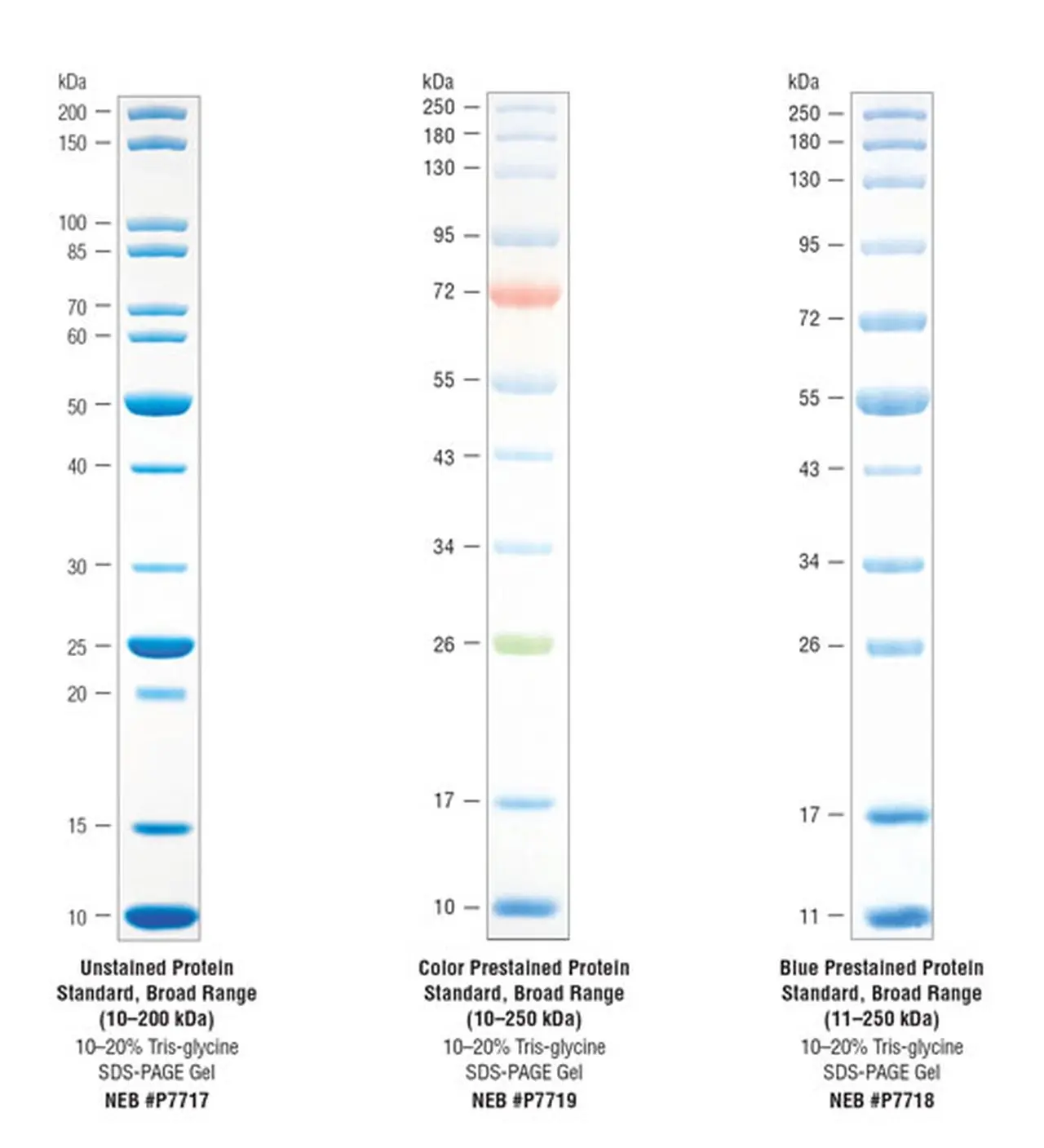A protein ladder, alternatively known as a protein marker or molecular weight marker, is a mixture of proteins whose molecular weights are known for the estimation of the size of proteins separated by electrophoresis. Protein ladders are widely applied in biochemistry experiments. The size of proteins separated by gel electrophoresis can be estimated, the progress of electrophoretic separation can be monitored, and transfer efficiency can be determined at the stage of Western blotting.
2 Primary Types of Protein Ladders
The popular types and applications of protein ladders are as follows:
1. Prestained Protein Ladder
It is designed with colored bands, which will be convenient to monitor the advancement of an electrophoretic run visually.
Natural BLUeye Prestained Protein Ladder may display some degree of band variation as a result of the variations in binding sites between the dye and the protein, whereas recombinant proteins are more likely to produce sharp bands. Recombinant protein ladders are generally better for the determination of molecular weights compared to natural protein ladders.
It has engineered recombinant protein ladders, which give distinct and well-defined bands with uniform molecular weights for enhanced precision. The color-stained or affinity-tagged BLUelf Prestained Protein Ladder can be labeled for easy identification and will facilitate detection in western blot experiments. With Prestained markers, it retains visibility on the membrane following transfer, so active monitoring of transfer efficiency and antigen localization can be done in repetitive screening assays.
2. Unstained Protein Ladder
Unstained protein markers show bands free from any kind of stain by dyes and thus provide accurate molecular weight estimation during the analysis in the SDS-PAGE gel. They are very useful while accurately determining the size of proteins of interest.
However, the proteins only stain up with a Coomassie Brilliant Blue R250 stain or any other non-specific protein stain.
Protein ladders that are unstained deliver better sizing of proteins because the prestained dyes may subtly change the way proteins appear within the gel.
Applications of Protein Ladders in Different Industries
Several protein ladders, or molecular weight markers, are commercially available for use in protein electrophoresis and western blotting applications. These workflows are highly utilized in many industries for research purposes or to aid in medical interventions.
Pharmaceutical
Protein ladders have been used for quality control, method validation, and assay development. They are applied to determine reference points and calibration curves in protein assays such as ELISAs and other forms of protein quantification methods.
They ensure accurate, reliable measurement and quantitation of protein concentration in pharmaceutical samples.
Biotechnology
Protein ladders are a very important tool in the researchers' arsenal in the biotechnology industry. The 100bp DNA Ladder H3 RTU (Ready-to-Use) has much use in the laboratory and aids in the visualization of the migration of proteins in SDS-polyacrylamide gel electrophoresis gel. It is also useful for estimating the size of proteins on SDS-polyacrylamide gels and Western blots. It makes verification of the transfer of proteins onto membranes following Western blotting.
Conclusion
Protein ladders help in the analysis of experimental proteins as they provide comparative bands in the gel through protein gel electrophoresis. It is a mixture of proteins having known molecular weight and other properties. To know more about it, contact Universal Biotechnology. They offer quality protein and DNA ladders for industrial purposes.



Leave a Comment